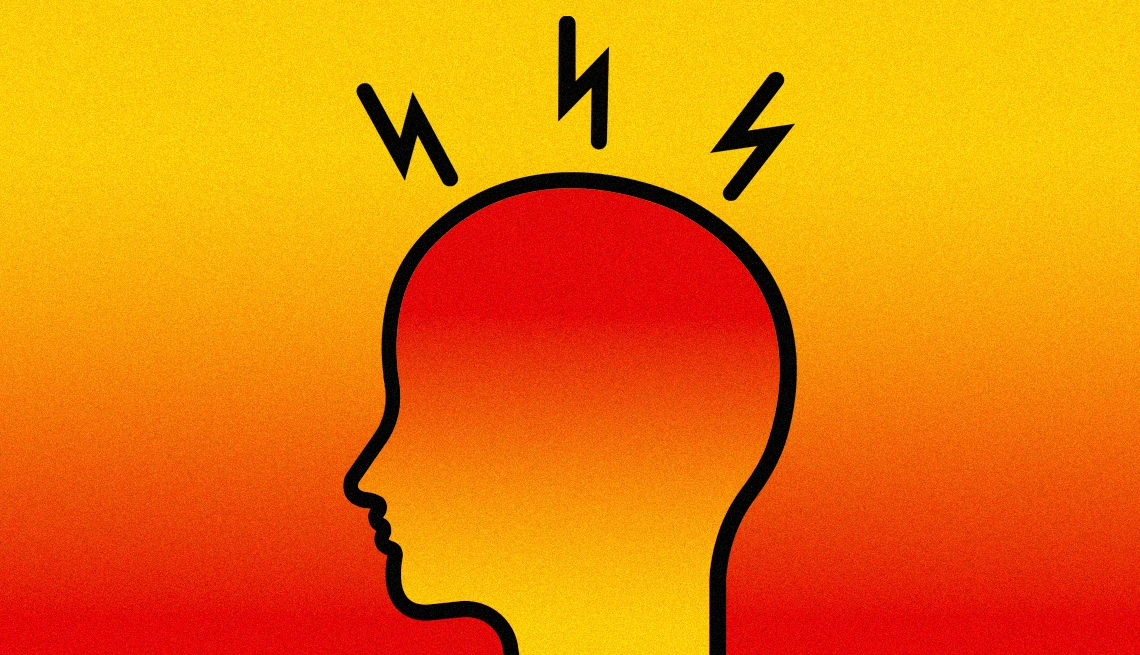AARP Hearing Center


Around 1 in 10 older adults get migraine headaches on a regular basis. If you’re that one, this summer is surely having its way with you.
Among the many triggers for migraine headaches — stress, lack of sleep, flashing lights, strong smells, loud noises — a dramatic change in weather is one of the most common, says Vincent Martin, M.D., director of the Headache and Facial Pain Center at the University of Cincinnati’s Gardner Neuroscience Institute and president of the National Headache Foundation. That’s true year-round, no matter the season. And yet Martin suggests the changes brought on by the steamy combination of heat and humidity are especially brutal for the migraine sufferer.
In a study presented earlier this summer at the American Headache Society’s annual scientific meeting, Martin and a group of researchers compared the daily headache diaries of 660 migraine patients who logged the frequency and severity of their headaches. When they compared the 71,000 or so diary entries against regional weather data for the same period, they found that for every 10-degree increase in daily temperatures, there was a 6 percent increase in the frequency of migraines on that day.
What is it about the heat that carries such a wallop? Actually, it’s not the heat itself that’s entirely to blame but something you may pay little to no attention to when you’re checking the forecast: the weather pattern.
“There are many different weather patterns that can trigger headaches,” explains Martin. For instance, “an approaching low-pressure system can cause barometric pressure to decline and temperatures and humidity to go up.” That combination is believed to be a perfect storm for triggering migraines.
“A lot of times, people will have a headache before the low-pressure system arrives — they’re like human barometers,” Martin adds. “They can pick up that an approaching low-pressure system is going to cause the barometric pressure to decline, along with the rise in temperatures and humidity and then eventually rain if the humidity doesn’t decline.”
How exactly they’re able to do that has yet to be determined (the research is inconclusive), but “one possibility is that there are sensors in the nose and sinuses that pick up these changes in barometric pressure,” says Martin. “Or it could be occurring in the inner ear. The inner ear can actually sense the barometric pressure falling.”
A number of other summer-centric factors may also figure in. For instance, research suggests lightning plays a specific role in triggering headaches, increasing the frequency in people who regularly get migraines by about 30 percent on days when lightning flashes across the sky, as compared with days when it doesn’t.
Although experts aren’t entirely certain why that is, “it’s probably that the lightning is affecting the chemicals in the air,” says Martin.




































































More From AARP
How Extreme Heat Can Speed Up Aging
A closer look at a new study that explores the connection
Heat Safety Tips for People 50-Plus
High temperatures can be a health hazard. Here’s why
25 Great Ways to Beat the Heat
When it’s sweltering, these tips will help you keep cool